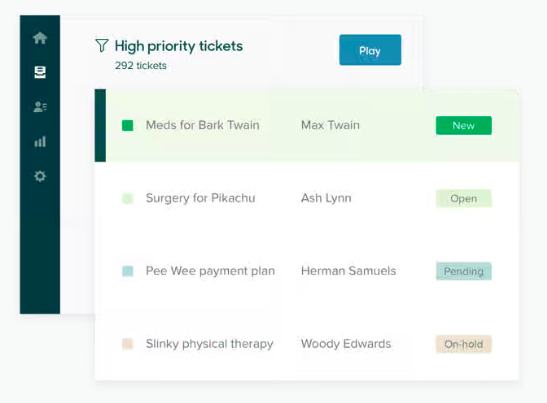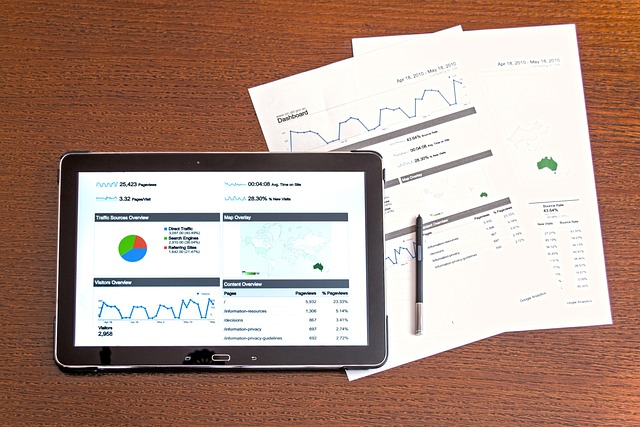In today’s world, there are hovering customers who look for immediate responses, especially during complaint lodgment. It is, therefore, important to use an efficient ticketing system. This is where the trump card Zendesk ticketing system is different. It’s a combination of all sections driving customers’ requests to be received in one area. This system makes it possible for you to work on multiple Zendesk tickets at once, enhancing operational efficiency and client satisfaction. Moreover, increasing efficiency in routing tickets means that inquiries will be directed to the correct agents and thus enhance response time. With Zendesk, ticket sharing simplifies and enhances work avoidable making it important for any customer service team.
In this article
1. Getting Started: Basic Features of the Zendesk Ticketing System
Zendesk Ticket Creation
Creating a ticket in the Zendesk ticketing system is straightforward. The first step is to gather customer requests coming from different mediums like emails, chat, or even social sites. This ensures that every concern is adequately channeled. Putting a charge on the customer and the type of request that the customer has in the system usually can go a long way in creating a ticket. This process enables you to keep track of all contacts.
Here, we turn our attention to the next crucial step, which is assigning the ticket created to the most appropriate agent. There are two options for delegating tickets. It is possible to divide them according to what each agent is best at or how busy they are. By doing so, the efficiency of distributing tickets in Zendesk will be appropriate and it will allow most tickets to be distributed to the right people. This makes the support team more efficient, and customer satisfaction is raised.

Zendesk Ticket Tracking
Tickets are perhaps the most essential feature of the Zendesk ticketing system. Each ticket has its status and all of them can be tracked in regard to whether they have been addressed or are still pending resolution. You are able to prevent standing issues so that they don’t go unaddressed because of this feature. You can also track what stage a ticket is in, whether it has been opened or closed, or is still pending. This is necessary for keeping workflows orderly.
Setting ticket priorities is another critical area. It would be foolish to expect every inquiry to be resolved as soon as it is logged. If certain tickets are more important than others, then placing them in order will make sure that urgent matters take precedence over others. This technique helps to conserve resources while ensuring that essential issues are resolved on time.
Zendesk Ticket Prioritization
To have a well-structured support system, organizing support tickets must be a concern to most users of the system. Once you assign importance to tickets, you limit ticket queues to those that have the potential to cause an impact on the organization. Apart from this, there is much better customer confidence in the quality of service delivery because a lot of improvements have been made in time management.
There are many ways to effectively prioritize one’s tasks. Ticket categorization can also be based on the level of urgency or importance. Another method is to utilize the Zendesk ticketing system features specifically designed for flagging priority tickets. These techniques allow you to control your activities as well as protect a high level of customer satisfaction.
2. Exploring Advanced Features of Zendesk Ticketing System
Automation in Zendesk Ticketing System
Automation plays a crucial role in enhancing the efficiency of the Zendesk ticketing system. By setting up automated responses, you can ensure that customers receive immediate acknowledgment of their inquiries. This feature not only saves time but also improves customer satisfaction by providing prompt feedback.
Setting up automated responses
How to set up automated responses is to edit and create triggers within the system. These triggers are fired when conditions like getting a new ticket or a changed existing ticket are satisfied. Repetitive tasks such as thanking a customer for calling, or informing them how long it would take to have their question answered can also be automated. Such a strategy helps in keeping customers in the communications loop and engaged.
Workflow automation
Automation of workflows cuts across the different departments and functions of the support organization. This makes it easy to manage different queues as agents will not be forced to work hard to ensure that every ticket is addressed. For example, using a more complex approach, the software can automatically assign tickets to agents according to the criteria that have already been established within the ticketing system. In this manner, the problem is solved quickly since each ticket is directed to the appropriate person promptly. In circumstances where more complicated problems need to be addressed, workflow automation also makes it possible to lessen the amount of manual work.
Customization Options in Zendesk
Another important element of the Zendesk ticketing system is customization. Because the system can be modified, it allows for enhanced workplace productivity and improved customer experiences.
Customizing ticket fields
One of the best ways to make growth possible is to modify ticket fields. From customers, this makes it possible to get the pertinent information. To get detailed information, Any kind of field about a particular issue can be created or changed to pull specific details, such as the type of product or nature of the problem. This last option makes it possible to structure the tickets necessarily and make sure that the agents have all the required information available to the relevant agents.
Personalizing customer interactions
Easier ways to make customers feel engaged with support is by providing targeted personal responses based on rich customer data. Instead, any time you have something to talk about or interact with a customer in this way, providing personalized solutions is always a good idea. Such tendencies help foster more trust and therefore, better relationships with the customers.
Omnichannel Support in Zendesk
Apart from the many that are already available within the system, an interesting thing about the Zendesk ticketing system is the fact that it also has omnichannel support options. Most importantly, it supports several channels simultaneously, making it easier to overcome challenges.
Integrating multiple communication channels
By connecting together such channels of communication as email, chat, or social networks, you create cohesion in support. Within the system, all the communications made over customers’ preferred channels are stored. Hence, it guarantees that no question goes unanswered no matter the channel used to pose it.
Benefits of omnichannel support
There are many benefits to be derived from omnichannel support. For one, it ensures a uniform experience on the customer end because all interactions within the center are consolidated. Because agents have a full view of the entire conversation, they can solve problems better. This all-round approach improves satisfaction among customers and fosters customer loyalty.
3. Best Practices for Zendesk Ticket Management
Categorization as a function in the Issuetracker, and in the ticketing system, is one of the pits that help to keep the support area organized, and effective considering that most of the customers are obfuscated with the different Tickets. When categorized, a customer inquiry can easily be understood. This practice allows the processes to be more efficient and also makes sure that every Zendesk ticket is addressed adequately. A large amount of time is also saved in categorization as it is an important part of analyzing trends and spotting trends that recur which will in turn help in strategizing how to deal with service practices and improving them in the process.

Effective categorization strategies
To categorize tickets effectively, you should implement a few key strategies:
Define Clear Categories: Establish distinct categories based on common issues or product types. This clarity helps agents quickly assign tickets to the right category.
Use Tags: Apply tags to tickets for more granular categorization. Tags can represent specific issues or customer segments, providing additional context.
Regularly Review Categories: Periodically assess and update categories to reflect any changes in products or services. This ensures that the categorization system remains relevant and effective.
Train Your Team: Other than the technical ways of going about it, it is more crucial in real life for the organizational structure staff to be explained the usefulness of its referral practice and why it is supposed to be done over and over again. The more it is done, the better the statistics and the ticket management practices are improved.
Keeping tickets up-to-date
Keeping Zendesk tickets up-to-date is essential for efficient ticket management. Regular updates provide customers with the latest information about their inquiries. You should ensure that agents update ticket statuses promptly as they progress through the resolution process. This practice not only keeps customers informed but also helps in tracking the progress of each ticket within the Zendesk ticketing system.
Ensuring timely responses
Timely responses are vital for maintaining customer satisfaction. You should set clear response time goals for your support team. Encourage agents to prioritize tickets based on urgency and impact. Automated reminders can help ensure that no ticket goes unattended for too long. By responding promptly, you demonstrate your commitment to customer service and build trust with your clients.
4. How to Leverage Zendesk Reporting and Analytics?
Monitoring Trends with Zendesk
Understanding trends in customer support can significantly enhance your service quality. The Zendesk ticketing system provides robust tools for monitoring these trends.
Identifying common issues
You can identify common issues by analyzing the data from your Zendesk tickets. This analysis helps you spot recurring problems that customers face. By recognizing these patterns, you can address the root causes and improve your products or services. For instance, if multiple tickets highlight a similar issue, it might indicate a need for product updates or additional training for your support team.
Analyzing customer feedback
Customer feedback is a goldmine of information. The Zendesk ticketing system allows you to gather and analyze this feedback effectively. You can use surveys and direct responses from customers to gain insights into their experiences. This feedback helps you understand what works well and what needs improvement. By acting on this information, you can enhance customer satisfaction and loyalty.

Measuring Customer Satisfaction in Zendesk
Customer satisfaction is a key indicator of your support team’s performance. Zendesk offers several tools to measure this crucial metric.
Using satisfaction surveys
Satisfaction surveys are an effective way to gauge how customers feel about your service. In Zendesk, CSAT evaluations are distributed through email the next day after a ticket is resolved. This type of survey is embedded into the message interface for the Zendesk website, phone, or social messaging. By gathering this information, you will be able to measure the impact of your support and notice which areas need the most attention.
Interpreting analytics data
To understand the level of customer satisfaction, it is imperative to analyze the analytics data. Reports in Zendesk are prepared in such a way that you can take the views with some metrics including the parameters that you wish to investigate. You can measure the time taken to respond to customer messages, the number of customers who have their issues addressed and the average rating given to the support received. In such a manner, this information enables you to place the strongholds and the weaknesses of your support system. In light of such information, you will be able to strategize and plan on how best you can improve your service.
5. How to Implement Strategies in Zendesk Ticketing System Efficiently?
Recap of discussed strategies
This overview will help you to implement any of the best system practices for the function of Zendesk. From understanding the basic functions associated with ticket management (for example creation and tracking) to using the advanced options offered, like automation and omnichannel support, every single bone is critical in getting any customer service goal accomplished in the service operation to its fullest. Updating and categorizing Zendesk tickets properly would thus enable your team to be efficient and timely. Reporting and analytics allow you to keep tracking and evaluating customer behaviors and trends in the environment so they make it possible to anticipate some changes for enhancement to take place.
Importance of implementation
The implementation of these strategies must therefore be a core factor when needing to bring the best out of your ticket support system based on the Zendesk application. In doing that, you are likely to not only enhance the productivity levels of the agents but also the interaction between the customers and the agents as well. Time wastage is reduced, and the quality of service is improved. Integration of these practices into your normal practice, allows you to explore evidence-based strategies which often are likely to increase the level of satisfaction held by customers, plus an enhancement in loyalty amongst the clients. It is very important to insist on the fact that when doing this, the strategies must be revised regularly to accommodate the ones that are most effective for the organization.

Encouragement to apply strategies
It is now time to act. Consider looking into the processes that are in place right now and how they can be done differently. Use the techniques discussed in this guide to fine-tune your Zendesk ticketing system. Encourage your staff to adopt them and provide them with the required tools and resources to do so. This will enable the development of a continuous improvement culture in the support personnel enabling them to provide exceptional service and even surpass customer expectations.
Resources for further learning
To further enhance your understanding and skills, explore additional resources on Zendesk’s official website. They offer a wealth of information, including tutorials, webinars, and community forums, where you can connect with other users and share best practices. Additionally, consider enrolling in online courses or attending industry conferences to stay updated on the latest trends and innovations in customer service. By investing in your professional development, you ensure that you remain at the forefront of efficient ticket management and customer support excellence.
Conclusion
Efficient use of Zendesk is crucial for enhancing your customer service operations. By implementing the strategies discussed, you can streamline processes and improve response times. This not only boosts agent productivity but also elevates customer satisfaction. Remember, the key to success lies in consistent application and adaptation of these strategies to fit your business needs. With Zendesk, you have the tools to transform your support system into a powerhouse of efficiency and reliability. Embrace these changes and watch your customer service thrive.



